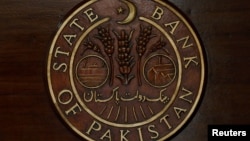Pakistan's $33.5 billion external financing needs are fully met for financial year 2022/23, the central bank chief said on Saturday, adding that "unwarranted" market concerns about its financial position will dissipate in weeks.
Fears have risen about Pakistan's stuttering economy as its currency fell nearly 8% against the U.S. dollar in the last trading week, while the country's forex reserves stand below $10 billion with inflation at the highest in more than a decade.
"Our external financing needs over the next 12 months are fully met, underpinned by our on-going IMF program," the acting governor of Pakistan's State Bank, Murtaza Syed, told Reuters in an emailed reply to questions.
Pakistan last week reached a staff level agreement with the International Monetary Fund (IMF) for the disbursement of $1.17 billion in critical funding under resumed payments of a bailout package.
"The recently secured staff-level agreement on the next IMF review is a very important anchor that clearly separates Pakistan from vulnerable countries, most of whom do not have any IMF backing," he said.
However, the lender's board needs to approve the agreement before the disbursement, which is expected in August, before which there remain prior policy actions to be fulfilled, according to sources familiar with the matter.
But some question Pakistan's ability to meet external financing needs, including debt obligations, despite the IMF funding.
Syed played down those concerns saying Pakistan's public debt profile, one of the "main flashpoints" for markets these days, is a lot better than in vulnerable countries with high public debt.
The country's public debt-to-GDP ratio is 71%.
"Pakistan’s external debt is low, of relatively long maturity, and on easier terms since it is heavily skewed toward concessional multilateral and official bilateral financing rather than expensive commercial borrowing," he said.
In a recent presentation to international investors reviewed by Reuters, Syed said $33.5 billion in gross external financing needs would be met "comfortably" with $35.9 billion in available financing.
Most of the financing was shown from multilaterals, oil payment facilities, and rollovers of bilateral financing, and the heaviest financing needs were in Q2 of FY2022-23.
The presentation also compared the situation in Pakistan to Sri Lanka, which recently defaulted, and said: "Pakistan tightened monetary policy and allowed the exchange rate to depreciate as soon as external pressures began."
It added that Sri Lanka’s fiscal position had been much worse than Pakistan’s, with primary deficits three to four times larger since the pandemic.
Syed said Pakistan is being unfairly grouped with more vulnerable countries amid panic in global markets due to a commodity supercycle, tightening by the U.S. Federal Reserve and geopolitical tensions.
"Markets are responding to these shocks in an unfairly broad-brush way, without paying enough attention to Pakistan’s relative strengths," he said. "We expect this reality to dawn in the coming weeks and the unwarranted fears around Pakistan to dissipate."









